Exploring Kizil Thousand Buddha Caves: A Must-Visit Destination for History Enthusiasts
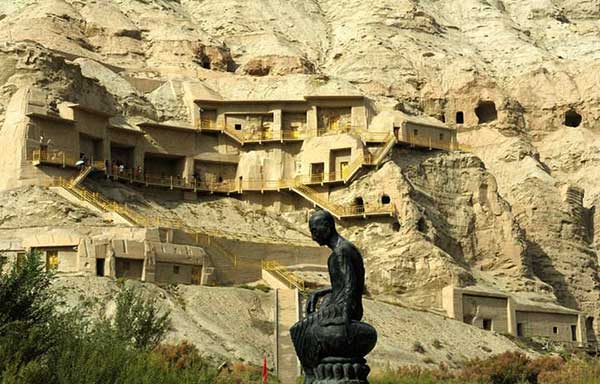
An Essential Guide to Visiting Kizil Thousand Buddha Caves
The Kizil Thousand Buddha Caves stand as a breathtaking testament to the fusion of art, culture, and spirituality that unfolded along the ancient Silk Road. Nestled in the stunning landscapes of Xinjiang, these caves, with a history spanning over 1,800 years, are not only the oldest Buddhist grottoes in China but also an invaluable repository of early Buddhist art and architecture. As you wander through the intricate corridors of these caves, you’ll be transported back in time, marveling at the exquisite murals that depict vibrant narratives of the Buddha’s life and teachings.
Each cave tells its own story, showcasing the remarkable craftsmanship of ancient artisans who carved these sacred spaces directly into the cliffs overlooking the Muzart River. With their mesmerizing designs and rich historical significance, the Kizil Caves offer a unique glimpse into the spiritual heart of early Buddhism in China, reflecting the profound cultural exchanges that occurred along this historic trade route.
Visiting the Kizil Thousand Buddha Caves is not just an exploration of ancient artistry; it is a journey into the very essence of human expression and belief. Whether you’re a history buff, an art enthusiast, or simply seeking a tranquil escape, this UNESCO World Heritage site invites you to discover its wonders amidst the rugged beauty of Xinjiang’s landscape. Prepare to be enchanted as you uncover the secrets held within these ancient stone walls, where the echoes of the past resonate with every step you take.
In This Guide
- An Essential Guide to Visiting Kizil Thousand Buddha Caves
- The Rich History and Legends of Kizil Thousand Buddha Caves
- Main Highlights: What You Absolutely Can’t Miss
- Planning Your Visit: A Practical Guide
- Tickets: Prices, Booking, and Tips
- How to Get There: A Complete Transportation Guide
- Local Cuisine and Accommodation Nearby
- Frequently Asked Questions
- Final Thoughts on Your Trip
The Rich History and Legends of Kizil Thousand Buddha Caves
Nestled in the breathtaking landscapes of Xinjiang, the Kizil Thousand Buddha Caves stand as a testament to the region’s rich historical tapestry and the profound cultural exchanges that have shaped it over centuries. These caves, excavated as early as the 3rd century, are not only the oldest Buddhist grottoes in China but also a vital part of the Silk Road narrative, where East met West in a harmonious blend of spiritual and artistic traditions.
The inception of the Kizil Caves can be traced back to the Eastern Han Dynasty, around the time Buddhism began to flourish in Xinjiang. The Kingdom of Qiuci (Kuche), a significant player in the region during the 4th century, became a hub for Buddhist activities. This kingdom’s rulers were avid supporters of Buddhism, commissioning skilled artisans and painters to create the awe-inspiring murals and intricate sculptures that still capture the imagination of visitors today. Their dedication is evident in the architectural diversity and artistic richness found across the 339 caves, which were meticulously carved into the cliffside along the Muzart River.
Over the centuries, the Kizil Caves underwent four distinct phases of development. The initial stage, from the late 3rd to mid-4th century, saw the creation of square caves featuring a simple design with a central shrine. As the art evolved, the development stage introduced more complex structures, including monk rooms and lecture halls, with murals that narrated the life stories of the Buddha and illustrated various karmic tales. The thriving stage in the 6th and 7th centuries marked the pinnacle of artistic expression, where gold leaf and elaborate designs were employed to adorn the caves, reflecting the flourishing of Buddhist art during this period.
However, by the 8th and 9th centuries, the Kizil Caves faced a decline, likely due to the tumultuous wars that swept across the region. These historical upheavals left marks on the cave murals, with some of the final artworks revealing a sense of abandonment and loss. Despite this decline, the legacy of the Kizil Caves endured, preserving an invaluable record of early Buddhist culture and the artistic endeavors that defined it.
Today, the Kizil Thousand Buddha Caves are recognized not only as a UNESCO World Heritage site but also as an “Art Treasury,” encapsulating the essence of Buddhist heritage and the cross-cultural interactions along the ancient Silk Road. For international travelers seeking to delve into the depths of history and spirituality, a visit to the Kizil Caves offers a profound journey through time, where each cave tells a story of devotion, artistry, and the enduring spirit of a civilization that once thrived in this remote corner of the world.
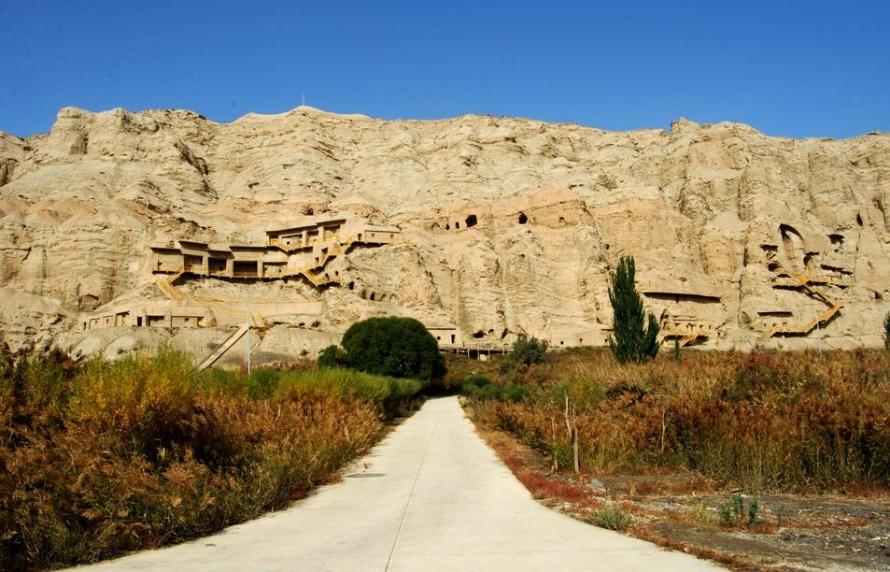
Kizil Thousand Buddha Caves.
Main Highlights: What You Absolutely Can’t Miss
The Kizil Thousand Buddha Caves are a remarkable testament to ancient Buddhist art and culture, nestled in the breathtaking landscapes of Xinjiang, China. This UNESCO World Heritage site is not only the oldest and largest Buddhist grotto complex in the region but also serves as a significant milestone in the history of Buddhism in China. Here are the main highlights you absolutely can’t miss during your visit:
1. Exquisite Murals and Paintings
The Kizil Caves are renowned for their stunning murals, which date back over 1,800 years. You’ll find intricate depictions of Buddhist stories, teachings, and iconography that are remarkably preserved. The vibrant colors and diverse themes, including scenes from the life of the Buddha and vivid representations of Bodhisattvas, showcase the artistic prowess of the time. Notable caves such as Cave No.38 and Cave No.76 exemplify this artistic heritage with their elaborate wall art.
2. Diverse Cave Structures
The site features a complex of 339 caves, each with unique architectural designs and functions. From monastic cells to grand worship halls, the caves reflect the evolution of Buddhist architecture over centuries. Pay special attention to Cave No.118, known for its central shrine, and Cave No.92, which features an impressive layout that reveals the thoughtful planning of the ancient builders.
3. Historical Significance
As the first stop for Buddhism entering China via the Silk Road, Kizil holds immense historical importance. The caves served as a center for Buddhist learning and artistry, fostering cultural exchanges between East and West. The evolution of the caves from the 3rd to the 9th century provides insight into the spread of Buddhism in this region, making it a fascinating site for history enthusiasts.
4. Stunning Natural Setting
The Kizil Caves are set against the dramatic backdrop of the Muzart River and surrounding cliffs, offering a captivating blend of nature and history. The picturesque scenery enhances the spiritual allure of the site, making it an ideal spot for photography and contemplation. Don’t forget to take a moment to appreciate the serenity of the landscape as you explore the caves.
5. Cultural Fusion
The Kizil Caves are not just a monument to Buddhist art; they symbolize the fusion of various cultures along the Silk Road. The influences of different civilizations are evident in the cave’s designs and art styles, reflecting a rich tapestry of cultural exchange. This unique blend makes the caves a vital part of understanding the historical context of the region.
6. Visiting Tips
- Best Time to Visit: The ideal months for visiting are May to June and September to October, when the weather is pleasant.
- Recommended Duration: Allocate at least two hours to fully appreciate the site.
- Opening Hours: The caves are open from 9:30 AM to 7:00 PM (May to September) and from 10:00 AM to 7:00 PM (October to the following April).
- Entry Fee: Tickets are reasonably priced at CNY 70, making it an accessible destination for all travelers.
7. Local Culture and Cuisine
While in the area, take the opportunity to experience local Uyghur culture. Indulge in traditional dishes such as kebabs and pilaf, and engage with local artisans to truly immerse yourself in the vibrant cultural landscape of Xinjiang.
Visiting the Kizil Thousand Buddha Caves is not just a journey through art and history; it is an experience that connects you to the ancient roots of Buddhism and the rich narratives that have shaped this unique region of China. Don’t miss the chance to explore this extraordinary site on your travels!
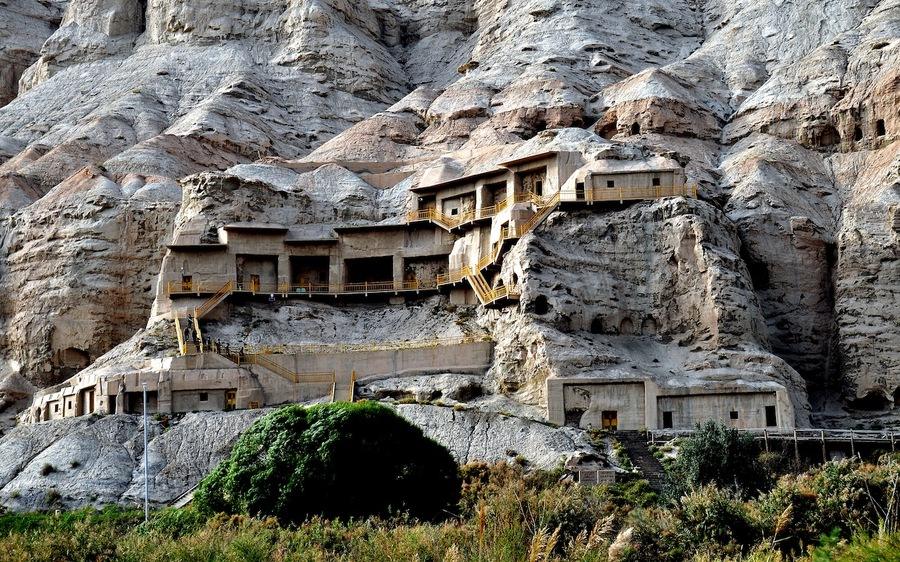
Kizil Thousand Buddha Caves.
Planning Your Visit: A Practical Guide
Planning Your Visit to Kizil Thousand Buddha Caves
Embarking on a journey to the Kizil Thousand Buddha Caves is like stepping into a time capsule of ancient Buddhist art and history. Nestled in the rugged landscape of Xinjiang, these caves offer an unparalleled glimpse into the rich tapestry of Buddhist culture along the Silk Road. Here’s everything you need to know to make the most of your visit.
Getting There
Location:
The Kizil Caves are located in Kizil Village, Baicheng County, Aksu Prefecture, Xinjiang, at an altitude of approximately 1,200 meters.
Transportation:
– By Plane: The nearest major airport is in Aksu City, which is well-connected to major cities in China. From the airport, you can hire a taxi or join a tour to reach the caves.
– By Train: Take a train to Aksu and then a local bus or taxi to Kizil Village. The train journey offers stunning views of the Xinjiang landscape.
– By Car: If you prefer to drive, renting a car can provide the flexibility to explore the region at your own pace. The roads are generally well-maintained, but be prepared for mountain driving.
Best Time to Visit
The optimal time for visiting the Kizil Caves is during the spring and autumn months, specifically from May to June and September to October. During these periods, the weather is mild and pleasant, ideal for exploring the caves and the surrounding area.
Opening Hours
- May to September: 09:30 AM to 07:00 PM
- October to April: 10:00 AM to 07:00 PM
Admission Fees
Tickets to the Kizil Thousand Buddha Caves are priced at CNY 70. It is advisable to purchase tickets in advance during peak tourist seasons to avoid long waiting times.
What to Expect
The Kizil Caves are a treasure trove of Buddhist art, featuring over 339 caves rich with intricate murals and sculptures that date back as far as the 3rd century. Expect to spend about 2 hours exploring the main highlights:
- Cave No. 38: Known for its stunning murals depicting the life of Buddha.
- Cave No. 76: Features elaborate carvings and a majestic Buddha statue.
- Cave No. 129: Offers insight into the decline of Buddhist influence in the region.
Take your time to appreciate the artistry and the stories behind each cave, as they reflect a fusion of Eastern and Western cultures along the ancient Silk Road.
Tips for Your Visit
- Dress Appropriately: The caves can be cool, so wear layers. Comfortable walking shoes are a must, as the terrain can be uneven.
- Photography: While photography is allowed, be respectful of the site and avoid using flash to protect the delicate murals.
- Guided Tours: Consider joining a guided tour for in-depth knowledge about the history and significance of the caves. Local guides can provide fascinating insights that enhance your experience.
- Stay Hydrated: Bring water with you, especially during warmer months, to stay refreshed while you explore.
- Plan for Sun Exposure: If visiting in the summer, sunscreen and a hat can help protect you from the sun, as there are limited shaded areas.
Nearby Attractions
Extend your journey by exploring additional sites in the Aksu Prefecture:
– Taklamakan Desert: Experience the vastness of one of the largest deserts in the world.
– Karakul Lake: A stunning alpine lake located near Kashgar, perfect for photography and picnics.
– Id Kah Mosque: A beautiful mosque in Kashgar, showcasing the region’s Islamic culture.
Accommodation
While there are limited accommodations directly near the caves, Aksu City offers a range of hotels and guesthouses catering to various budgets. Booking in advance is recommended, especially during peak travel seasons.
Final Thoughts
Visiting the Kizil Thousand Buddha Caves is not just a sightseeing trip; it’s an opportunity to immerse yourself in the rich history of Buddhism and the Silk Road. Prepare well and embrace the serenity and spiritual significance of this UNESCO World Heritage site. Enjoy your adventure!
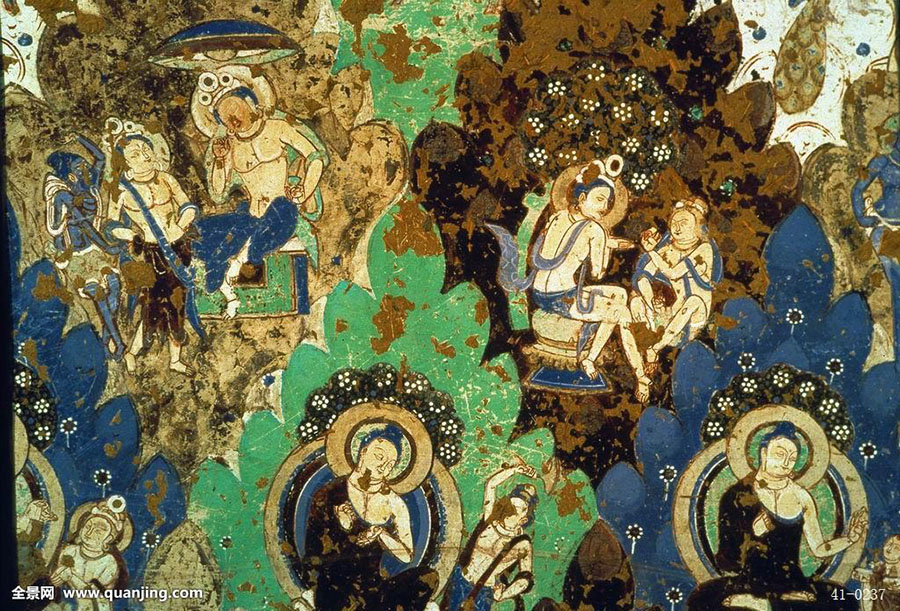
Kizil Thousand Buddha Caves.
Tickets: Prices, Booking, and Tips
When planning your visit to the Kizil Thousand Buddha Caves, understanding the ticketing process is essential for a smooth experience.
Ticket Information
-
Price: Admission to the Kizil Thousand Buddha Caves is priced at CNY 70 (approximately $10 USD). This fee grants you access to explore the ancient caves and marvel at the stunning murals and architecture that date back over 1,800 years.
-
Opening Hours: The caves are open daily:
- May to September: 09:30 AM to 7:00 PM
- October to April: 10:00 AM to 7:00 PM
Booking Tips
-
Purchase in Advance: While tickets can typically be purchased on-site, it’s advisable to buy them in advance if you’re visiting during peak tourist seasons (May to June and September to October). This will help you avoid long lines and ensure you have ample time to explore the site.
-
Consider Guided Tours: For a deeper understanding of the historical and cultural significance of the caves, consider joining a guided tour. Many tour operators offer packages that include transportation and knowledgeable guides who can enhance your experience with fascinating insights.
-
Be Mindful of Timing: Aim to allocate around two hours for your visit. This duration allows you to appreciate the artistry and history of the caves without feeling rushed.
-
Check for Discounts: Occasionally, discounts may be available for students or seniors, so be sure to inquire about any applicable promotions when purchasing your ticket.
-
Prepare for Weather: Given the location’s altitude of 1,200 meters, temperatures can vary. Dress appropriately for the weather, and ensure you have sun protection during the warmer months.
Getting There
The Kizil Thousand Buddha Caves are located in Kizil Village, Baicheng County, Aksu Prefecture, Xinjiang. It’s advisable to plan your transportation ahead of time, whether you’re traveling by car or part of a tour group.
By keeping these ticketing details and tips in mind, you can ensure a memorable visit to this remarkable UNESCO World Heritage site. Happy exploring!
How to Get There: A Complete Transportation Guide
Reaching the Kizil Thousand Buddha Caves, a UNESCO World Heritage site renowned for its ancient Buddhist art, requires some planning, but the journey is well worth the effort. Here’s a comprehensive guide on how to get there, ensuring that your visit is as smooth and enjoyable as possible.
Getting to Kizil Thousand Buddha Caves
1. Arriving in Xinjiang
The closest major city to the Kizil Caves is Aksu, located approximately 100 kilometers away. Your journey will likely begin in one of these key cities:
- Urumqi: The capital of Xinjiang, Urumqi has the most extensive transportation options, including a major international airport.
- Kashgar: Another significant city in Xinjiang, known for its rich history and culture.
By Air:
– Urumqi Diwopu International Airport (URC): This airport connects with major cities in China and a few international destinations. From here, you can take a domestic flight to Aksu.
– Kashgar Airport (KHG): Similar to Urumqi, Kashgar offers flights to Aksu as well.
2. From Aksu to Kizil Caves
Once you arrive in Aksu, you have several options to reach the Kizil Thousand Buddha Caves:
-
By Taxi or Ride-Hailing Services: The most convenient way is to hire a taxi or use a ride-hailing app, which can take you directly to the caves. The drive takes about 1.5 to 2 hours, depending on traffic and road conditions.
-
By Bus: For a more budget-friendly option, you can take a local bus from Aksu to Baicheng County, where the Kizil Caves are located. Once in Baicheng, you may need to hire a local taxi to reach the caves, as public transport options are limited.
3. Exploring the Area
If you wish to explore more of the region, consider these additional transportation options:
-
Car Rentals: Renting a car gives you the flexibility to explore the surrounding areas at your own pace. Ensure you are aware of local driving regulations and road conditions.
-
Guided Tours: Many tour operators in Aksu and Urumqi offer packages that include transportation to the Kizil Caves along with guided tours of the site. This can be a stress-free way to visit while learning more about the history and significance of the caves.
4. Best Time to Visit
To make the most of your trip, plan your visit during the best months: May to June or September to October. During these periods, the weather is typically mild, making for a more pleasant exploration of the caves.
5. Additional Tips
- Tickets: Entrance to the Kizil Caves costs approximately CNY 70. It’s advisable to purchase tickets in advance during peak tourist seasons.
- Opening Hours: The caves are open from 09:30 to 19:00 from May to September, and 10:00 to 19:00 from October to April. Plan your visit accordingly to allow ample time for exploration.
- Preparation: Bring water, sunscreen, and comfortable walking shoes, as you’ll be navigating the caves and surrounding areas.
Conclusion
With its stunning murals and historical significance, the Kizil Thousand Buddha Caves are a must-visit for anyone traveling through Xinjiang. By following this transportation guide, you can ensure a smooth journey to one of China’s most fascinating cultural treasures. Safe travels!
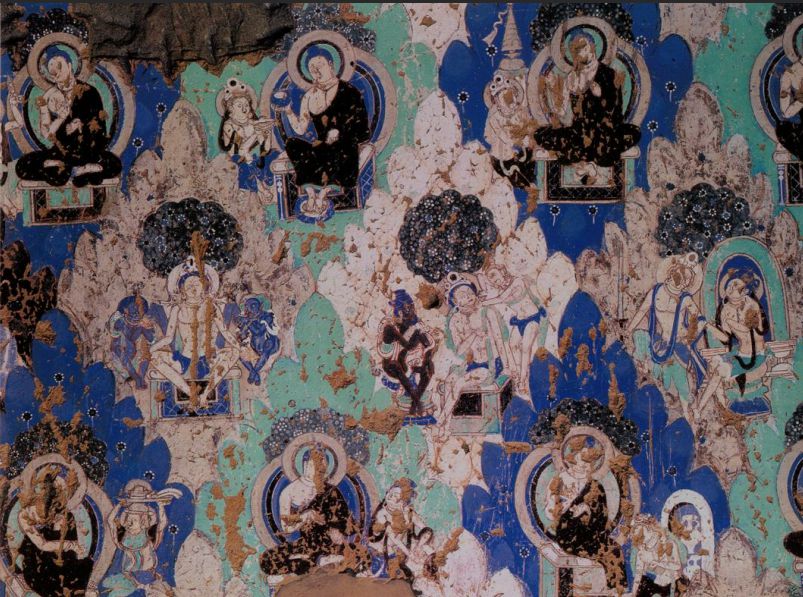
Kizil Thousand Buddha Caves.
Local Cuisine and Accommodation Nearby
Exploring the Kizil Thousand Buddha Caves is not just a journey through history but also an opportunity to indulge in the local flavors of Xinjiang. After a day of marveling at the ancient murals and architectural wonders, you’ll want to unwind with some delicious regional cuisine and a comfortable place to stay.
Local Cuisine
When it comes to food near the Kizil Thousand Buddha Caves, you’ll find an array of delightful options that showcase the rich culinary traditions of Xinjiang. Here are a few must-try dishes and where to find them:
-
Laghman: A hand-pulled noodle dish typically served with a rich, savory sauce and a variety of vegetables and meats. Look for local restaurants where this dish is a specialty; it’s often made fresh daily.
-
Dapanji: Known as “big plate chicken,” this dish features tender chicken pieces cooked with potatoes and served alongside thick noodles. The hearty flavors make it a perfect meal after a day of exploration.
-
Kebabs: Xinjiang is famous for its lamb kebabs, seasoned with a blend of spices and grilled to perfection. Many street vendors and small eateries near the caves offer these delicious skewers, perfect for a quick and satisfying bite.
-
Naan Bread: This traditional flatbread, often baked in a tandoor, is a staple in Xinjiang cuisine. Pair it with your favorite meat dish or enjoy it on its own with some yogurt or sauce.
For a delightful dining experience, consider visiting Kizil Restaurant, located just a short drive from the caves. This restaurant offers a comfortable atmosphere and an extensive menu featuring many local dishes.
Accommodation Nearby
After sampling the local flavors, it’s essential to find a cozy place to rest. Here are a couple of accommodation options that offer comfort and convenience:
-
Kizil Caves Hotel: This hotel, situated close to the caves, provides guests with comfortable rooms and stunning views of the surrounding landscape. It’s an excellent choice for travelers seeking easy access to the site, with amenities that include a restaurant serving local cuisine and free Wi-Fi.
-
Baicheng Inn: Located in Baicheng County, this inn offers a more budget-friendly option without sacrificing comfort. Rooms are clean and well-equipped, and the friendly staff can help arrange local tours and activities.
-
Aksu Grand Hotel: If you’re looking for a more luxurious stay, this hotel in Aksu offers modern amenities, spacious rooms, and a full-service restaurant. It’s a great base for exploring both the Kizil Caves and the wider region of Xinjiang.
Whether you’re savoring the flavors of Xinjiang or relaxing at a nearby hotel, your visit to the Kizil Thousand Buddha Caves promises to be a memorable experience filled with culture, history, and culinary delights.

Kizil Thousand Buddha Caves.
Frequently Asked Questions
Here are some practical FAQs for travelers planning to visit the Kizil Thousand Buddha Caves.
What are the Kizil Thousand Buddha Caves?
The Kizil Thousand Buddha Caves, located in Xinjiang, China, are the largest and oldest Buddhist grottoes in the region. Dating back over 1,800 years, these caves feature exquisite murals and sculptures that showcase the rich history of Buddhism’s introduction to China along the Silk Road.
How do I get to the Kizil Caves?
The Kizil Caves are situated near Kizil Village in Baicheng County, Aksu Prefecture, Xinjiang. The nearest major city is Aksu, which can be reached by train or flight from larger cities like Urumqi. From Aksu, you can take a taxi or a local bus to the caves, which are approximately 80 kilometers away.
What are the opening hours and entry fees?
The Kizil Caves are open daily from 09:30 AM to 7:00 PM from May to September, and from 10:00 AM to 7:00 PM from October to April. The admission fee is CNY 70 (approximately $10 USD).
How much time should I allocate for my visit?
Plan to spend about 2 hours exploring the Kizil Caves. This should give you ample time to appreciate the stunning murals, sculptures, and the historical significance of the site.
When is the best time to visit?
The ideal months to visit the Kizil Caves are from May to June and September to October. During these times, the weather is usually pleasant, making your exploration more enjoyable.
Are there any facilities available at the site?
Yes, the Kizil Caves offer facilities such as restrooms and small kiosks for refreshments. However, it’s advisable to bring water and snacks, especially if you plan to spend a longer time at the site.
What should I wear during my visit?
As the caves are located at an altitude of 1,200 meters, it can be cooler than expected. Wear comfortable clothing and sturdy walking shoes for exploring the caves. Consider layering your clothing to adapt to changing temperatures.
Are photography and videography allowed?
Photography is generally permitted at the Kizil Caves, but be respectful of the cultural and religious significance of the site. Some areas may have restrictions, so look for signage and follow any instructions provided by the site staff.
Final Thoughts on Your Trip
Visiting the Kizil Thousand Buddha Caves is not just an excursion; it’s a journey back in time to the very roots of Buddhism in China. As you wander through this ancient site, surrounded by intricate murals and awe-inspiring sculptures, you’ll feel the weight of history and the fusion of cultures that once thrived along the Silk Road. The caves, with their serene ambiance and stunning artistry, invite introspection and appreciation for the craftsmanship of centuries past.
Whether you’re an avid history buff, a lover of art, or simply a curious traveler, Kizil offers a unique glimpse into the spiritual and cultural exchanges that have shaped this region. As you depart, take a moment to reflect on the stories held within these walls—stories of devotion, artistry, and the enduring spirit of human creativity.
So, as you close this chapter of your travels, carry the essence of the Kizil Caves with you. Let the inspiration drawn from this UNESCO World Heritage site enhance your journey, reminding you of the rich tapestry of history and culture that awaits in every corner of the world. Safe travels on your next adventure!